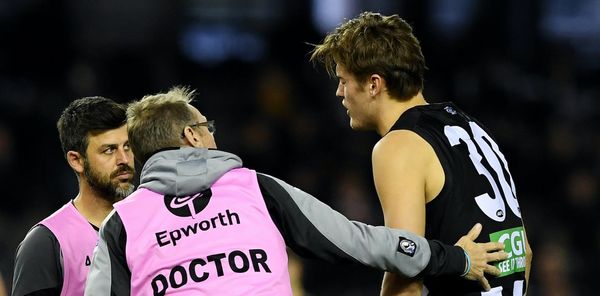
We are at the crossroads when it comes to addressing the issue of brain trauma in sport. Increasing numbers of athletes and their families are revealing their daily struggles resulting from a history of repetitive hits to their brains. Studies showing long-term impairments are also escalating concern in the community.
Consequently, our major sports have responded, implementing and refining concussion protocols, cracking down on head-high hits and resting players for 11 to 12 days. Sports are now resolute in their mission to show the public that this issue is sorted. Done and dusted. Nothing to see here now. Let the games continue.
In their quest to be good corporate citizens, these sports have focused this issue solely on concussion. Despite acknowledging links to the insidious brain disease known as chronic traumatic encephalopathy (CTE), the sports provide solutions based on the assumption that concussion is the enemy. But this is only half of the story.
A recent report on four American soccer players posthumously diagnosed with CTE and our recent case study on the death of AFLW player Heather Anderson brings us back to the other road, the one less travelled: the issue of repetitive physical trauma to the brain.
This is the issue that isn’t discussed as publicly or as widely as it should be because it is a difficult concept for the lay sports enthusiast to grasp – that the physicality, the fabric that makes these sports addictive to play and watch, could be damaging our brains.
I have previously spoken to journalists who have empathised with my concerns but have admitted that it is too difficult to write about. Concussion is much easier to explain and much more newsworthy (think big crunching hit). Repetitive knocks are often dismissed by sceptics who argue “how hard does a knock to the head have to be?” Some have said to me, “I can knock my head with my knuckles all day and not get CTE”. Informal fallacies are an easy antidote to the spectre of a brain disease risk.
But it is a risk we need to confront. We are not talking about athletes getting the odd concussion from an accidental collision or high contact from a wayward forearm to the head. The risk of CTE comes from repetitive impacts (anywhere between 20 and 30 times the Earth’s gravity) that impart forces on to brain tissue. Not quite enough to cause a concussion but significant nevertheless when done tens of thousands of times over a playing career. Like smoking, CTE risk comes from environmental exposure. The more one is exposed, the greater the risk.
The brain is delicate. Some doctors and pathologists have described it as “squishy”, similar to tofu. The offset of having an organ as complex as the brain is its vulnerability to damage. Impacts from collisions, tackling, bumping and being slung to the ground add up. It accelerates and decelerates the brain tissue, putting stretching and strain tensions that cause microdamage. Repeat that over many training sessions and matches across decades of a playing career.
While some may argue that alcohol and drugs affect the mental health of these athletes prior to their posthumous CTE diagnosis, it has been explained by experts that, seen down the microscope, substance abuse brain damage differs to CTE damage. We cannot keep diverting the attention away that repetitive physical trauma is the major contributor to CTE.
However, this exposure risk does not mean we want to stop these sports. Adults, have fun and knock yourself out (pun intended). But exposure can be reduced. For children with developing brains, the stakes are higher. We do not let kids smoke or drink for a reason.
We can do the same in contact sports. While there is no magic number, modifying sports for children to the age of 14 years can significantly reduce the risk of CTE. Children can still learn the fundamental skills of running, agility, passing, catching and the resilience of knowing how to win and deal with loss. But like many other sports that have modified versions to reduce chronic injuries in kids, modifying these sports will reduce unnecessary hits to the head.
Many of the federal parliamentary inquiry recommendations released on Tuesday centre on concussion and rightly so. Recognise and remove and if in doubt sit it out. But recommendations must go beyond concussion and address the issue of environmental exposure of CTE risk. We do not want another athlete and their family to suffer through a brain disease that could be prevented.
Do we have the will to take the road less travelled?
• Alan Pearce is a clinical neuroscientist and concussion/CTE researcher. He is an adjunct professor at La Trobe University, adjunct research manager at the Australian Sports Brain Bank and non-executive director of the Concussion Legacy Foundation Australia










